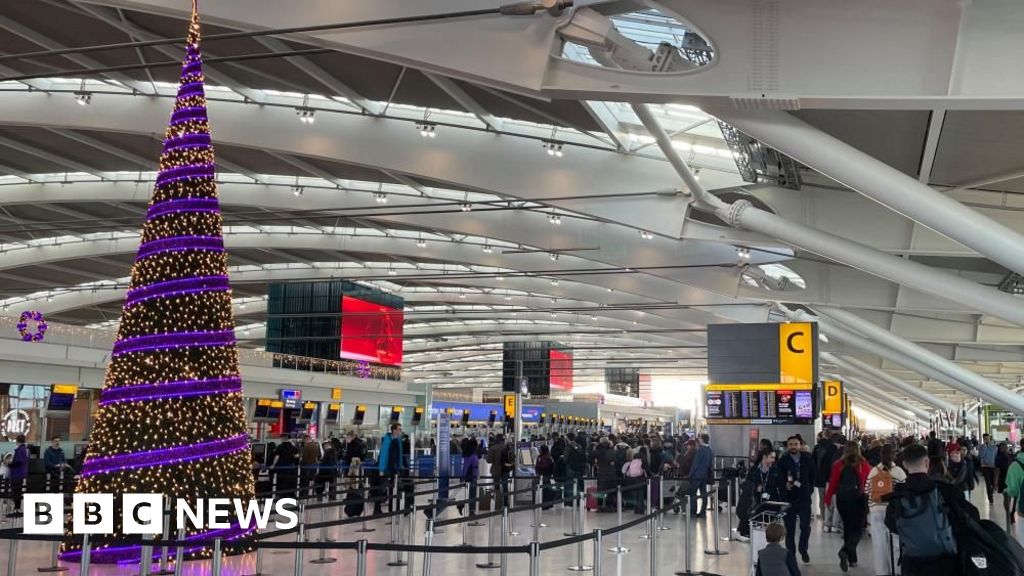A pilot performs a walkaround before a United Airlines flight
Leslie Josephs/CNBC
U.S. passenger airlines have added nearly 194,000 jobs since 2021 as companies went on a hiring spree after spending months in a pandemic slump, according to the U.S. Department of Transportation. Now the industry is cooling its hiring.
Airlines are close to their staffing needs but the slowdown is also coming in part because they’re facing a slew of challenges.
A glut of flights in the U.S. has pushed down fares and eaten into airlines’ profits. Demand growth has moderated. Airplanes are arriving late from Boeing and Airbus, prompting airlines to rethink their expansions. Engines are in short supply. Some carriers are deferring airplane deliveries altogether. And labor costs have climbed after groups like pilots and mechanics inked new contracts with big raises, their first in years.
Annual pay for a three-year first officer on midsized equipment at U.S. airlines averaged $170,586 in March, up from $135,896 in 2019, according to Kit Darby, an aviation consultant who specializes in pilot pay.
Since 2019, costs at U.S. carriers have climbed by double-digit percentages. Stripping out fuel and net interest expenses, they’ll be up about 20% at American Airlines this year and around 28% higher at both United Airlines and Delta Air Lines from 2019, according to Raymond James airline analyst Savanthi Syth.
It is more pronounced at low-cost airlines. Southwest Airlines‘ costs will likely be up 32%, JetBlue Airways‘ up nearly 35% and Spirit Airlines will see a rise of almost 39% over the same period, estimated Syth, whose data is adjusted for flight length.
Easing hiring
Friday’s U.S. jobs report showed air transportation employment in August roughly in line with July’s.
But there have been pullbacks. In the most severe case, Spirit Airlines furloughed 186 pilots this month, their union said Sunday, as the carrier’s losses have grown in the wake of a failed acquisition by JetBlue Airways, a Pratt & Whitney engine recall and an oversupplied U.S. market. Last year, even before the merger fell apart, it offered staff buyouts.
Other airlines are easing hiring or finding other ways to cut costs.
Frontier Airlines is still hiring pilots but said it will offer voluntary leaves of absence in September and October, when demand generally dips after the summer holidays but before Thanksgiving and winter breaks. A spokeswoman for the carrier said it offers those leaves “periodically” for “when our staffing levels exceed our planned flight schedules.”
Southwest Airlines expects to end the year with 2,000 fewer employees compared with 2023 and earlier this year said it would halt hiring classes for work groups including pilots and flight attendants. CFO Tammy Romo said on an earnings call in July that the company’s headcount would likely be down again in 2025 as attrition levels exceed the Dallas-based carrier’s “controlled hiring levels.”
United Airlines, which paused pilot hiring in May and June, citing late-arriving planes from Boeing, said it plans to add 10,000 people this year, down from 15,000 in each 2022 and 2023. It plans to hire 1,600 pilots, down from more than 2,300 last year.
It’s a departure from the previous years when airlines couldn’t hire employees fast enough. U.S. airlines are usually adding pilots constantly since they are required to retire at age 65 by federal law.
Airlines shed tens of thousands of employees in 2020 to try to stem record losses. Packages of more than $50 billion in taxpayer aid that were passed to get the industry through its worst-ever crisis prohibited layoffs, but many employees took carriers up on their repeated offers of buyouts and voluntary leaves.
Then, travel demand snapped back faster than expected, climbing in earnest in 2022 and leaving airlines without experienced employees like customer service agents. It also led to the worst pilot shortage in recent memory.
In response, companies — especially regional carriers — offered big bonuses to attract pilots.
But times have changed. Even air freight giants were competing for pilots in recent years but demand has waned as FedEx and UPS look to cut costs.
American Airlines CEO Robert Isom said in an investor presentation in March that the carrier added about 2,300 pilots last year and that it expects to hire about 1,300 this year.
“We will be hiring for the foreseeable future at levels like that,” he said at the time.
Despite the lower targets, students continue to fill classrooms and cockpits to train and build up hours to become pilots, said Ken Byrnes, chairman of the flight department at Embry-Riddle Aeronautical University.
“Demand for travel is still there,” he said. “I don’t see a long-term slowdown.”















































